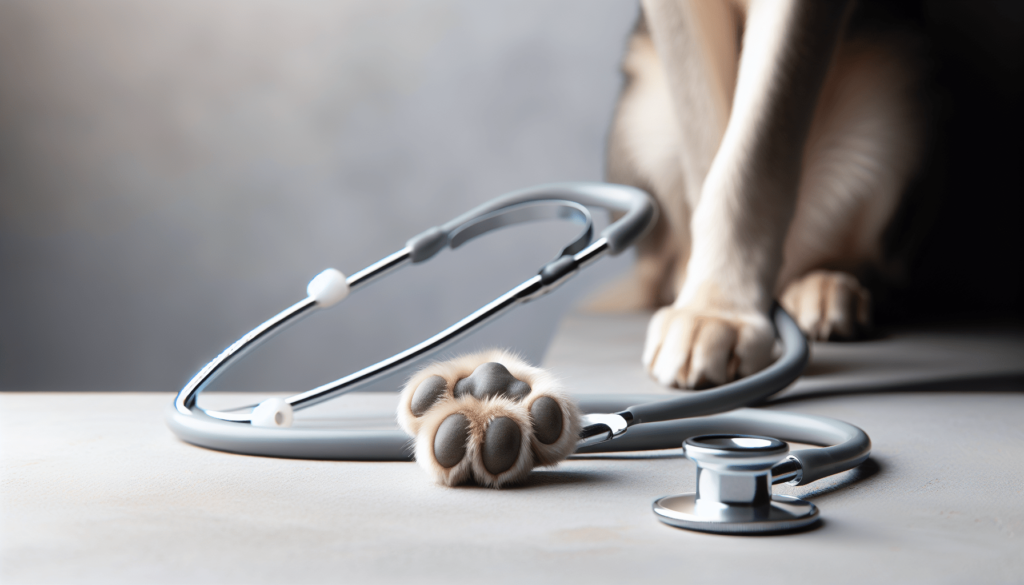Have you ever found yourself sneezing uncontrollably or struggling to breathe when you’re around pets? Or perhaps you’ve noticed that your eyes start watering every time you visit a friend who has a cat or dog. If any of these scenarios sound familiar, you might be dealing with pet allergies. Discussing these symptoms with your doctor can be a crucial first step in managing your allergies effectively.
Understanding Pet Allergies
Pet allergies are an immune system reaction to proteins found in an animal’s skin cells, urine, or saliva. Contrary to popular belief, pet fur itself isn’t actually an allergen. However, pet fur can trap other allergens like dust and pollen, which can exacerbate your symptoms. Common symptoms include sneezing, runny or stuffy nose, itchy or watery eyes, and skin rashes.
Common Symptoms
| Symptom | Description |
|---|---|
| Sneezing | Frequent, often accompanied by a runny or stuffy nose. |
| Itchy, watery eyes | Redness and itchiness in your eyes, often with tears. |
| Skin rashes | Hives or eczema that develop after contact. |
| Coughing or wheezing | Respiratory symptoms that can mimic asthma. |
Preparing for Your Doctor’s Appointment
Preparation is key when discussing your pet allergies with your doctor. Here’s how you can make the most out of your visit.
Document Your Symptoms
Keeping a symptom diary can be incredibly helpful. Note the times when your symptoms are most severe and any patterns you observe. For example, do your symptoms worsen when you’re in specific rooms, or after direct contact with pets?
Sample Symptom Diary Entry:
- Date: 2023-10-10
- Time: 3 PM
- Symptoms: Sneezing, itchy eyes
- Severity level (1-10): 6
- Possible Triggers: Visited a friend with a cat
- Actions taken: Took antihistamine
List Your Current Medications and Treatments
Be sure to inform your doctor of any medications or treatments you’re currently using, even if they are not related to allergies. This will help your doctor suggest the best treatment plan for you without causing unwanted drug interactions.
Write Down Questions and Concerns
You might have numerous questions about your symptoms, potential treatments, or lifestyle adjustments. Writing these down beforehand ensures you won’t forget to ask them during your appointment.
Sample Questions:
- Could my symptoms be related to something other than pet allergies?
- What tests will determine the cause of my allergies?
- What treatment options are available for pet allergies?
- Can I still keep my pet if I am diagnosed with a pet allergy?

Diagnostic Tests for Pet Allergies
Your doctor may recommend several tests to pinpoint the cause of your symptoms.
Skin Prick Test
This is one of the most common tests for allergies. A small amount of allergen extract is placed on your skin, usually on your forearm or back. The skin is then pricked so the allergen can enter your skin. If you are allergic, you will develop a raised bump at the test site.
Blood Test
A blood test can measure the immune system’s response to specific allergens by assessing the number of allergen-specific antibodies in your bloodstream. This test is used if you cannot take a skin test due to certain conditions like severe eczema.
Patch Test
While less common for pet allergies, a patch test might be conducted if a skin reaction occurs hours or days after exposure. Small amounts of allergen patches are placed on your skin and left for two days to see if a reaction develops.
Discussing Treatment Options
Once your allergies are confirmed, your doctor will discuss various treatment options with you. These treatments can help manage your symptoms and improve your quality of life.
Medications
Several medications can alleviate the symptoms of pet allergies.
| Medication Type | Description | Common Examples |
|---|---|---|
| Antihistamines | Help reduce sneezing, runny nose, and itching by blocking histamine, a substance your body releases. | Benadryl, Claritin |
| Corticosteroids | Nasal sprays that reduce inflammation and relieve nasal symptoms. | Flonase, Nasacort |
| Decongestants | Reduce swollen tissues in the nasal passages and make it easier to breathe. | Sudafed |
| Leukotriene Modifiers | Block the action of leukotrienes, substances involved in allergic reactions. | Singulair |
Immunotherapy
For severe allergies, immunotherapy might be a recommended option. This involves getting regular injections of the allergen in gradually increasing doses. The goal is to desensitize your immune system over time. Sublingual immunotherapy, where the allergen is placed under your tongue, is another option.
Avoidance Strategies
In addition to medical treatments, your doctor will likely recommend lifestyle changes to help manage your symptoms.
Pet-Free Zones
Designate certain areas of your home as pet-free zones, especially your bedroom. This will provide you with a sanctuary where you can breathe freely and recover.
Frequent Cleaning
Regular cleaning can significantly reduce allergens in your home. Vacuuming with a HEPA filter, using air purifiers, and frequently washing your pet’s bedding can make a big difference.
Grooming Your Pet
Regularly bathing and grooming your pet can help reduce the amount of allergens they shed. Consult your veterinarian for the best practices and products that are safe for your pet.

Follow-Up and Monitoring
After your initial consultation and diagnosis, regular follow-up appointments will help monitor the effectiveness of your treatment plan. Your doctor may adjust your medications or suggest new strategies based on your progress.
Symptom Tracking
Continue to track your symptoms even after starting treatment. This will help you and your doctor understand what works and what doesn’t.
Adjusting Treatments
Allergy symptoms can change over time, so treatments might need adjustments. Your doctor will work with you to find the optimal balance of medications, lifestyle changes, and other interventions.
When to Seek Emergency Care
While pet allergies are usually manageable, severe allergic reactions can occur. It’s crucial to know when to seek immediate medical attention. Anaphylaxis is a rare but severe allergic reaction that requires emergency care. Symptoms include swelling of the throat, difficulty breathing, rapid drop in blood pressure, and loss of consciousness.
Conclusion
Discussing pet allergies with your doctor is the first step towards effective management and relief. By preparing for your appointment, understanding the available diagnostic tests and treatment options, and being proactive in your follow-up care, you can significantly improve your quality of life. Remember, your health is important, and managing allergies is a crucial part of maintaining your overall well-being.
